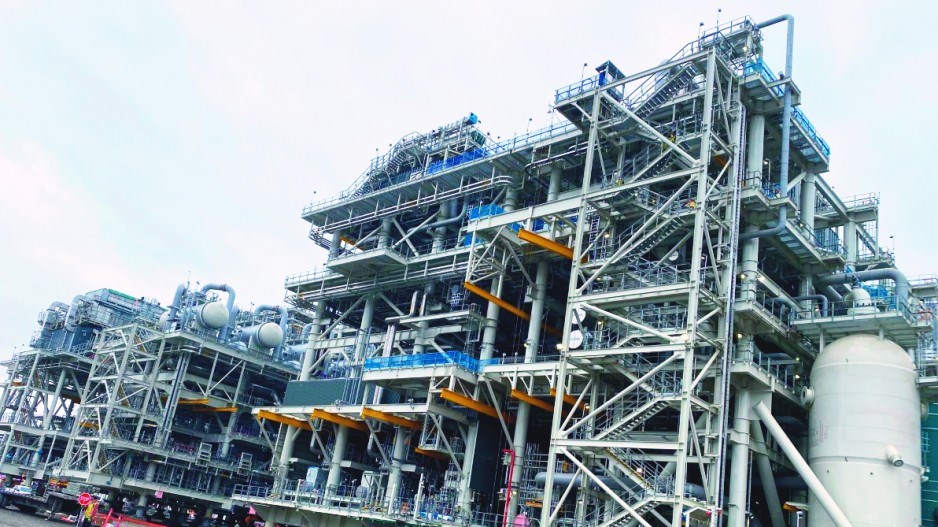The project Prime Minister Justin Trudeau called “the single largest private-sector investment project in Canadian history” is 85 per cent complete, but it will take more than a year to start up and test the LNG Canada liquefied natural gas processing plant and export terminal in Kitimat.
“We reached peak construction in 2023, with more than 8,000 Canadians building our facility here in Kitimat,” LNG Canada CEO Jason Klein said in a year-end progress report.
The LNG Canada project – estimated to represent a total investment of $40 billion, including the Kitimat plant itself, the Coastal GasLink pipeline and upstream natural gas wells and infrastructure – got its federal environmental certificate in 2015 and the company announced a final investment decision on the project in 2018.
The Coastal GasLink pipeline is now mechanically compete, and the LNG Canada plant in Kitimat is 85 complete, Klein said.
“With construction nearing completion, we’re preparing for safe startup activities in 2024," Klein said. "Our safe startup program will take more than a year to complete.
The LNG Canada plant in Kitimat is a massive industrial complex with more than 200 large modules and a mammoth LNG storage tank that’s 52-metres high, 92 metres in diameter and lined with a special nickel-steel alloy capable of withstanding minus 160 degrees Celsius temperatures. It will store up to 225,000 cubic metres of liquefied natural gas.
The project now nearing completion is actually just the first phase of a potential two-phase project, with a second phase adding two more “trains” to the existing two. This would roughly double the LNG facilities' annual production capacity from 14 million tonnes to 26 million tonnes.
“Together with our joint venture partners, we continue to progress the opportunity to provide more local benefits and more energy to the world through our proposed Phase 2 expansion,” Klein said.
LNG Canada’s joint partners are Shell Canada, Petronas, PetroChina, Mitsubishi Corp., and Korean Gas Corp. (KOGAS).




